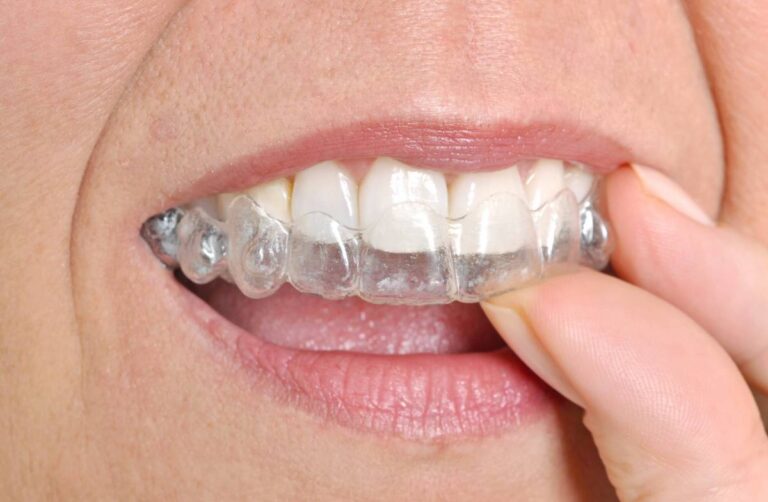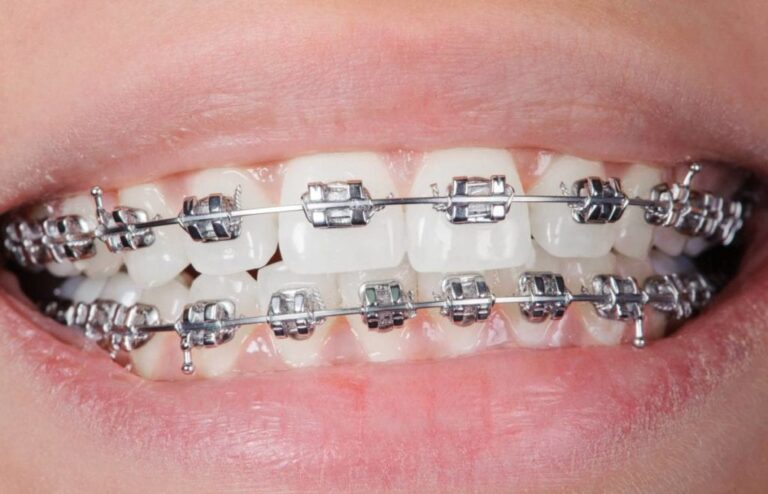If you’ve got crooked teeth and/or teeth that just don’t seem to fit together the way they should, then a visit to an orthodontist is in order.
What is Orthodontics?
Orthodontics is the branch of dentistry that uses treatments like braces to help move your teeth so they are straight and fit together the way they should (the fancy term for this misalignment of teeth is malocclusion). Not only can orthodontics give you a winning smile with straight teeth, but has health benefits too. Crooked teeth are usually harder to clean and more prone to dental decay and gum disease because they collect more plaque. Also, well aligned teeth and a normal bite prevent premature wear of teeth and jaw joint problems.
The dentists who specialize in treating crooked teeth are called orthodontists. Orthodontists must complete 4 years of dental school and then are required to complete another 2-3 years of advanced training before they can practice as an orthodontist.
To determine if orthodontic treatment is right for you and, if so, what treatment plan makes the most sense for you, you’ll need to visit either a dentist or an orthodontist. They will generally assess you through taking your medical and dental history, performing an oral exam, taking x-rays and getting models of your teeth.
Dental Issues Orthodontics Can Help Fix
If you have any of the following issues, you may be a good candidate for orthodontic treatment and should get an assessment…
- Overbite (also known as buck teeth)
- Underbite (which can create a “bulldog” appearance)
- Crossbite
- Open bite
- Misplaced midline
- Gapped teeth (spacing issues)
- Crowding
Treatment Options
Orthodontists have a number of treatment options at their disposal. Some fixed, others removable. But all of them essentially work by placing pressure on the teeth and jaws so that your teeth gradually move into perfect alignment. Below are a few of the more common treatment options that orthodontists use. Which one is best for you depends on the specific issues you’re trying to fix and the severity of the problem.
Metal braces
Traditional metal braces are what most people think of when it comes to orthodontics. The traditional braces are generally most effective for treating overcrowding than the other options. Once your braces are in place, your orthodontist will make adjustments that will slowly move your teeth into proper alignment.
Ceramic braces
These are similar to metal braces in terms of size and shape, however, their brackets are clear making them less noticeable. The downside is they are more expensive than traditional metal braces.
Lingual braces
These are the same as traditional metal braces, except they go on the inside of your teeth so they are invisible outside your mouth. The cons of lingual braces are they are more expensive, more difficult to clean and more difficult to adjust than normal braces.
Invisalign / Clear Aligners
These are becoming more and more popular. They are essentially clear trays that are used to slowly move your teeth into proper alignment. See our article on Invisalign for more details.
Retainers
Retainers are removable devices made of wires or clear plastic. They are mainly used to hold your teeth in place after they’ve already been straightened.
Costs
As with many other cosmetic dentistry treatments, orthodontic treatments ain’t cheap and the cost depends on the type of treatment and your location. The most common treatment, metal braces, can range from $3000 – $7000, with an average of around $5000. If you choose non-metal braces, the costs will be higher.


